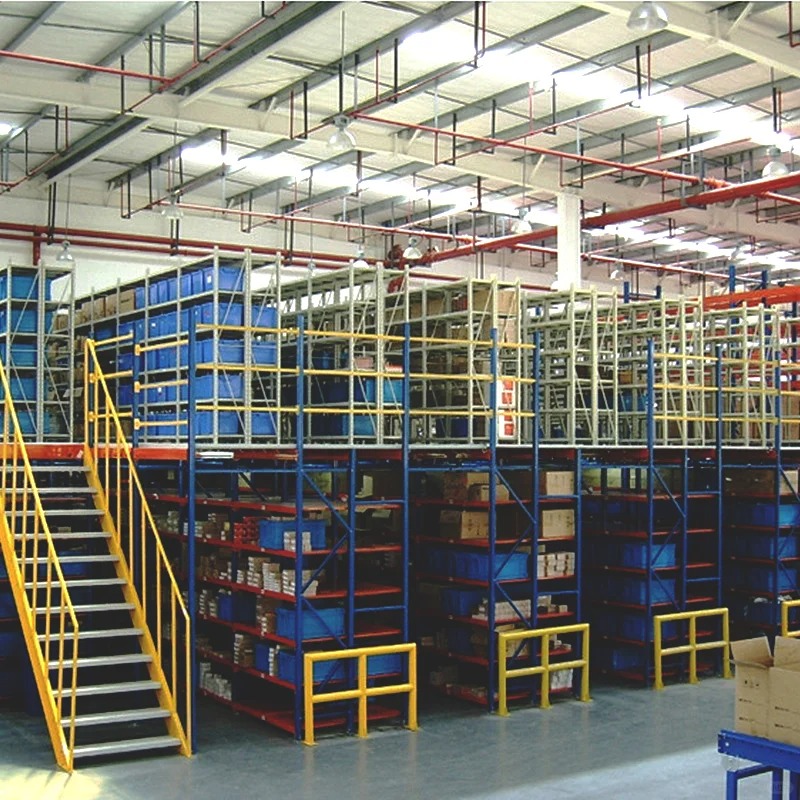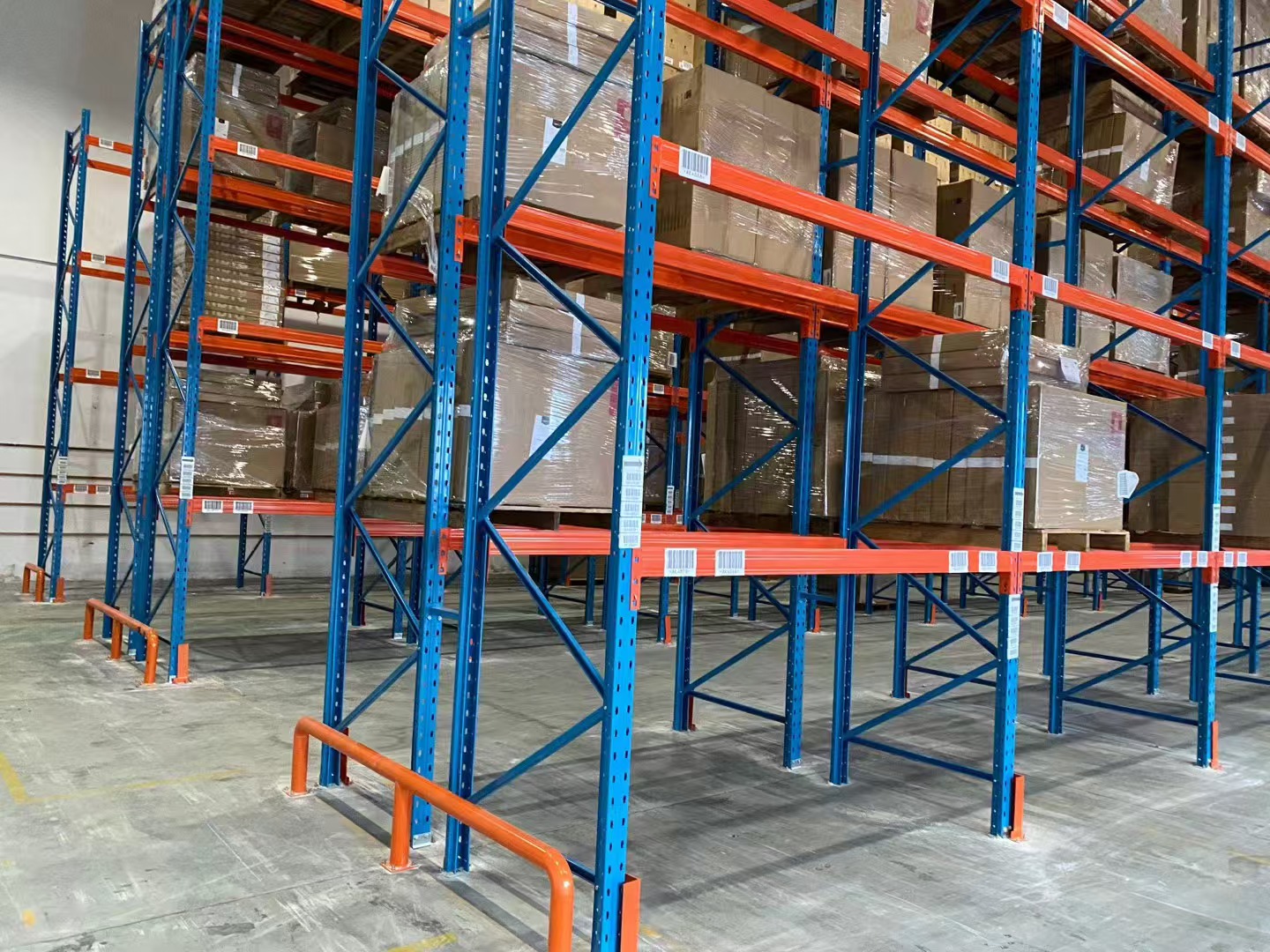In the world of industrial storage and logistics, racks estructurales (structural racking systems) stand as the backbone of efficient warehouse operations. These robust, engineered systems are designed to maximize storage capacity, improve organization, and enhance the safety of any storage facility. Unlike lighter-duty shelving, racks estructurales are built to handle palletized loads, heavy equipment, and bulky materials, making them indispensable in industries ranging from manufacturing and retail to distribution and cold storage. The term itself implies a focus on structural integrity, highlighting the system's core purpose: to provide a safe, reliable, and highly adaptable framework for storing goods at height. Understanding the intricacies of racks estructurales is crucial for any business looking to optimize its space and streamline its supply chain. This article delves into five essential aspects of these critical storage systems, providing a comprehensive guide for operators, warehouse managers, and logistics planners.

What Exactly Are Racks Estructurales? Defining the System
At its most fundamental level, racks estructurales refer to heavy-duty storage rack systems constructed from structural steel components. The key differentiator from other shelving is the use of roll-formed or structural steel beams that slot into connected upright frames. This design creates a series of vertical bays where pallets or heavy items can be stored on horizontal beams. The primary components include:
Upright Frames: The vertical columns that form the backbone of the system. They feature a series of hooks or holes at precise intervals for beam connection.
Beams: The horizontal members that connect two upright frames, creating the levels or shelves for storage. They are designed with a safety latch to prevent dislodgement.
Wire Decking or Supports: Often used on the beams to provide a surface for pallets or goods to rest on, enhancing safety and stability.
Braces and Connectors: Various diagonal and horizontal bracing elements that provide lateral stability and ensure the entire structure can withstand seismic and impact forces.
The defining characteristic of racks estructurales is their load-bearing capacity. These systems are engineered to support immense weights, often ranging from several thousand pounds per level to capacities that can handle multiple tons across the entire structure. This makes them the go-to solution for palletized storage using forklifts, reach trucks, and other material handling equipment. The design philosophy behind racks estructurales is not just about holding weight but doing so in a way that maximizes available cubic space, turning empty air into valuable inventory real estate.
The Different Types and Configurations of Racks Estructurales
Not all storage needs are identical, and thankfully, racks estructurales come in a variety of configurations to meet diverse operational requirements. Choosing the right type is critical for achieving maximum efficiency and throughput.
Selective Pallet Racking: This is the most common and versatile type of racks estructurales. It allows direct access to every single pallet located in the system, making it ideal for warehouses with a high SKU count where any pallet might need to be retrieved at any time (high selectivity). Its simple design consists of upright frames and beams, making it easy to install and reconfigure.
Drive-In/Drive-Through Racking: Designed for high-density storage of homogeneous products. In this configuration, racks estructurales are built with rails that allow forklifts to drive directly into the rack structure to place or retrieve pallets. Drive-in racks have a single entrance, operating on a Last-In, First-Out (LIFO) basis, while drive-through racks have entries on both ends for First-In, First-Out (FIFO) inventory management.
Push-Back Racking: Another high-density solution, push-back racks estructurales feature carts on inclined rails nested at each level. Pallets are loaded from the front, pushing the previous pallets back. When a pallet is retrieved, the ones behind it gently move forward. This system offers better selectivity than drive-in systems while still significantly increasing storage density.
Pallet Flow Racking: Utilizes a dynamic storage system based on gravity. racks estructurales are equipped with wheeled tracks set on a slight decline. Pallets are loaded from the high end and flow smoothly to the low end for picking. This is a perfect FIFO system, ideal for perishable goods or products with expiration dates.
Cantilever Racking: A specialized form of racks estructurales designed for long, bulky, or irregularly shaped items like lumber, pipes, furniture, or rolls of carpet. It features a vertical column (the cantilever upright) with arms that extend outward, providing unobstructed access to stored materials without the interference of front columns.
Materials, Engineering, and Safety Standards
The reliability of any racks estructurales system hinges on the quality of its materials and the precision of its engineering. These are not simple products; they are engineered systems that must comply with rigorous international safety standards.
Materials: High-quality racks estructurales are manufactured from structural-grade steel. The steel is often roll-formed into specific profiles to achieve the optimal balance of strength and weight. The material is typically treated with a protective finish, such as powder coating, to resist corrosion, scratches, and damage from environmental factors, which is especially important in harsh warehouse environments or cold storage facilities.
Engineering and Load Capacity: Every component of a racks estructurales system is meticulously engineered to support specific load capacities. Engineers calculate the Uniformly Distributed Load (UDL) for each beam level and the overall capacity of the upright frames. These calculations consider not only the static weight of the inventory but also dynamic forces from forklift impacts, seismic activity (per local building codes), and the potential for uneven loading.
Safety Standards: Reputable manufacturers design their racks estructurales to comply with standards set by organizations like the Rack Manufacturers Institute (RMI) and the American Institute of Steel Construction (AISC) in the United States, or similar bodies internationally (e.g., FEM in Europe). These standards govern everything from design and testing to installation and inspection. Adherence to these standards is non-negotiable for ensuring the structural integrity and safety of the warehouse and its personnel.
Professional Installation and Inspection: Proper installation by certified professionals is crucial. Even the best-designed racks estructurales can fail if incorrectly assembled. Furthermore, regular scheduled inspections by qualified personnel are mandatory to identify and address issues like beam deflection, upright frame damage, or loose connectors before they lead to a catastrophic failure.

The Critical Role of Design and Planning
Implementing racks estructurales is not merely a purchase; it's a strategic project that requires thorough design and planning. A well-designed system maximizes space and efficiency, while a poor design can create bottlenecks and safety hazards.
Warehouse Layout and Dimensions: The first step involves a detailed analysis of the warehouse space. Key measurements include ceiling clear height, floor flatness, column locations, door and sprinkler positions, and the paths of fire suppression systems. The design of the racks estructurales must integrate seamlessly within this existing infrastructure.
Inventory Analysis: The design must be driven by the inventory itself. Planners must analyze the size and weight of pallets, the number of SKUs, inventory turnover rates (velocity), and the required storage density. This analysis determines the most suitable type of racks estructurales (e.g., selective for slow-moving items, push-back for fast-moving).
Equipment Compatibility: The racks estructurales layout is intrinsically linked to the material handling equipment used. The aisle width between racks is determined by the turning radius of the forklifts or reach trucks. A system designed for narrow-aisle (NA) reach trucks will have much narrower aisles than one designed for counterbalance forklifts, dramatically increasing storage density.
Software and Modeling: Modern planning almost always involves sophisticated warehouse design software and computer-aided design (CAD) models. These tools allow planners to create a 3D digital twin of the proposed racks estructurales layout, simulating storage capacity, workflow, and traffic patterns before any physical installation begins. This virtual planning phase is essential for optimizing the investment.
Economic and Operational Advantages of Implementing Racks Estructurales
The investment in a high-quality racks estructurales system delivers a substantial return on investment (ROI) through numerous tangible economic and operational advantages.
Maximized Storage Capacity: The most obvious benefit. By leveraging vertical space, racks estructurales can double or even triple the storage capacity of a warehouse compared to floor stacking, effectively delaying or eliminating the need for a costly facility expansion or relocation.
Improved Inventory Management and Accessibility: Organized racks estructurales facilitate better inventory control. With a designated location for every SKU, products are easier to find, count, and manage. This reduces picking errors, minimizes stockouts, and improves overall order fulfillment accuracy and speed.
Enhanced Safety: A properly installed and loaded racks estructurales system is vastly safer than unstable floor stacking. It reduces the risk of product collapse, protects inventory from damage, and creates clear, organized aisles that improve visibility and reduce the chance of forklift accidents. Safety is a paramount advantage of using engineered racks estructurales.
Increased Productivity and Efficiency: An optimized layout allows forklift operators to store and retrieve pallets faster and with less travel time. Efficient workflows directly translate into higher throughput, allowing the warehouse to process more orders with the same or fewer labor hours.
Scalability and Flexibility: Modern racks estructurales are designed to be modular and adaptable. As business needs change, the systems can be reconfigured, expanded, or even relocated with relative ease. This flexibility protects the long-term value of the investment and allows the storage solution to evolve with the business.
Racks estructurales are far more than simple metal shelves; they are a sophisticated, engineered solution that forms the critical infrastructure of a modern, efficient warehouse. From understanding their basic components and various types to appreciating the deep engineering and safety standards that govern them, a comprehensive knowledge of these systems is vital. The planning and design process is a strategic exercise that directly impacts a company's bottom line through maximized space, improved safety, and enhanced operational efficiency. Whether for a new facility or an optimization project, investing in the right racks estructurales is an investment in the foundation of a streamlined and successful logistics operation. By focusing on these five key aspects, businesses can make informed decisions that ensure their storage systems are not just holding products, but actively driving growth.







